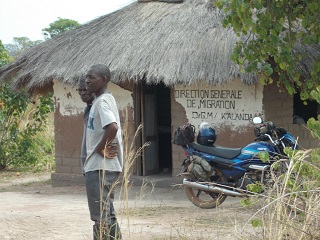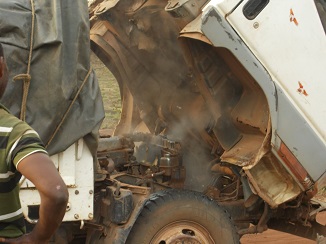It seems I have heard of that book, but never read it. I’ll check it out. Feeling a little better, but on the computer this morning at 2:30 cause of time zone confusion. We’ve been operating 7 hours ahead of now. So we fight to stay awake until it’s very late, like at 5 pm…haha…then wake early in the morning.
We had the hardest trip I’ve ever made. 6 days of hard travel to get in, six to get out. 35 hour plane rides, 18 hour bus rides, 19 hours in a really old junky truck on non-existant roads, motorcycles, 4x4’s, walking. Entire towns with no food for sale. I’ve been to a lot of rough places, but this was by far the most remote. But I did take my wife along this time. Good times…
Zambia and DR Congo are the most disfunctional places I’ve ever been. But what we found in the center of it was absolutly amazing. The most well managed, put together, hard core indigenous community development group I have ever heard of. Absolutely unbelievable. If you can find a picture on Google maps or Google Earth you might find a satellite pic of a place called “Fube, D.R.Congo” . This group built that city over the past 9 years after leaving the refugee camps in Zambia…There are 175 members. Average wage per person is under $.10USD/day. Everything they have they dig out of the ground or from the trees. The vice president of the group is the primary school principal in a govt job. She has not recieved her first paycheck in 7 years. I asked her why. She said, “things are slow here. Money is good, but we live on hope and faith.”
They make their own fired brick. We are helping them to come up with fired clay roof tiles. NOTE: if anyone is an expert on the subject I would be open to some help here.
I think the most surprising thing I ever saw was that Their town and camps are clean. Yes, that’s right. In the heart of third world Africa, there is no trash on the streets. There are no food scraps laying around. There are very few flies. They have covered garbage pits like septic tanks to put it in. There are no goats or dogs in town. There is no open defication. Everything is orderly and clean (relative to surrounding areas). I mean it’s still the end of the African dry season.
We taught some classes on some simple techs that we could do in a short time. 16 brick Rocket stoves were a huge hit because they could make almost all the material from the earth.
TipTaps were very popular, but many were concerned that they could not afford, or find an empty 2 liter bottle.
The teaching that eating raw honey is very healthy was quite welcome as some well intended, yet apparently very wrong European backpacker told them that eating sweet things was bad for their health.
Very high rate of vits A and C defficiency, but otherwise surprisingly healthy. Few parasites. Pretty good water handling practices. We helped them cover and protect their spring source while we were there.
Erika taught some solar cooking classes which was very exciting to the women.
We taught pasteurization of water, SODIS, general sanitation, ORT therapy, made a few suggestions about their gardening practices to stop the powdery mildew problem, and other similar stuff.
Mostly we went to meet the people, check things out, and investigate what resources are available. They have control of virgin timberland about the size of 2 Alabama counties. Until the Congolese civil war the area was full of lions and elephants. Most of them got eaten, the rest escaped to Tanzania. So they have a lot of natural resources, including iron ore, sulfur, timber, good soil, and great clean water in abundance. Close to Lake Tanzanique. But they lack any kind of industry to convert anything into a marketable product. They are doing amazing work protecting the trees from the loggers of China. Chinese companies are clear cutting Zambia and Congo. They make a deal with the high up gov’t officials who pay a very small sum to the local chief and then they give a big John Deere tractor to the local community to skid out the logs. The locals are allowed to use the tractor to plow in exchange. The people are not aware of the value of the logs. Some of them worth tens of thousands of dollars. And they are happy to not have to plow with a hoe. But when it’s done, the tractor moves on to the next place with trees and the people are left in an over grown clear cut. The weeds take over, which makes it even harder to farm. The local chief in this area put all his land under this group I am working with so it would have some legal protection against such practices. So they are doing real well with that.
We want to do more training in the area of health & agriculture, water moving and purufication, cooking tech, etc…
But first they need an income. I’ve never been to a development target arena where the very first thing a needs assessment calls for is money. But this group has gotten themselves to that point all by themselves. They are completely ready for micro enterprise training. Most of the time it takes years to get a group to that point. But they’ve been at this for 17 years on their own. Which is really exciting to me. I am not interested in being anyone’s saviour or God. And there is always that to have to overcome when you work with a people that puts you too high on a pedastol. But these folks own their own work, and we are seen by them as “helpful friends” not as “invading powerful kings”. Not a single person there asked me for a single thing other than information.
So, if I can get healthy, we want to make a plan to develop specific micro enterprise techs for them specifically. So they can generate an economy in the area. 10 years ago the area was just woods. Now the town has 15,000 people and no developed markets, etc. The group has built about 127 miles of roads to connect themselves with other villages, most of which are in other countries. Tanzania and Zambia. So trade across the borders is hindered because you have to pay off the people on both sides of the border. It cost us $20 to bribe our way into Congo and $20 to get out. even with totally legal, and expensive national visas. Not much to rich Americans, but a big deal if your profit margins are in the cents not dollars range…
They have:
- Huge natural resources to pull from.
- virtually total green-light support from all levels of Congolese government and chiefs
- Unbelievable determination. They have a song that says,_"Even if we get as skinny as nails, we’ll never never give up. We’ll always go forward. You can’t take anything from us. Anything we have, we will give to you. Come join us to go forward."
They need:
- market development,
- transport technology (there are virtually no trucks to haul goods). Currently they are using bicycles and motorcyles.
- small business development such as:
- wood working products with associated timberland management training: to make furniture, doors, windows, etc for export to Tanzania and Zambia…woodgas power generation to run it.
- Some way to mill lumber: wood gas powered sawmill?
- maybe a corn puffer and syrup production facility to make carmelized puffed corn packagable snack food for market.
- rocket technology food dehydrator for huge local abundance of unused mangoes. then export.
- Simple pedal powered lathe to turn out broom handles to make brooms from local materials for market.
- Access to the internet. We had a list of questions from people there that we could not answer at the time. I told them we would research it and send word. It took me less than 15 minutes on the internet to confidently answer all the questions I got the whole time I was there. Everything from swelling of a baby"s brain, to garden pest treatments, to identifying gem stones. I don’t think we realize how amazing this tool really is.
10.and a thousand other things.
We are excited to get started…we will keep praying about it. Hopefull we can find a way to make the money we need to do some work there. Current thinking is that we might be able to take the whole family for several months next dry season, so Jakob can help with gasification, Luke can teach bee keeping, and Jesse can help with his water pumps. And Naomi will undoubtedly become our official translator. She is very fast with languages.
We’ll see what happens.
So that’s a glimpse of what we’ve been into. To tell the truth, we really haven’t even had time to process anything. Yhis is the first time I’ve written any of this down, so we will take some time to pray abut it and see what happens from there.
How was your trip to Rwanda? I haven’t looked for any posts about it yet. Haven’t had time to catch up on everything.
Also, Jim Hart. If you are reading this, I would be interested in talking to you about your little gasifier that runs the generator that you always bring to Argos. I think it would be an option for our work there. Especially the no-weld version.
I am uploading a picture of a homemade welder I saw in Zambia. This poor guy is welding with a pair of pink sunglasses.
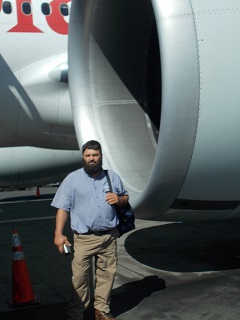
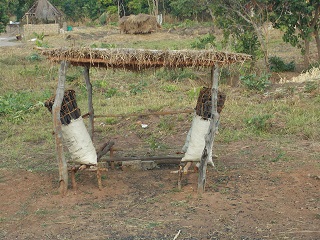 They are turning all their trees into charcoal for pennies. Some of it is very hard char. sounds like glass when you tap it.
They are turning all their trees into charcoal for pennies. Some of it is very hard char. sounds like glass when you tap it.
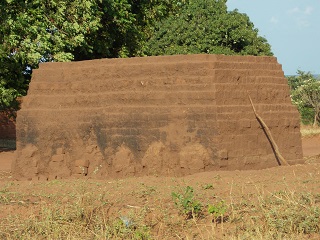 A single use brick kiln.
A single use brick kiln.
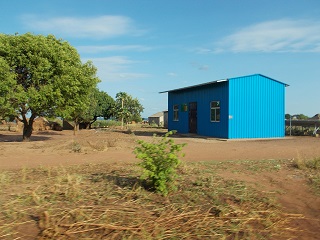 China is hugely investing in Zambia. These blue buildings are gifts from the Chinese that have hammer mills and charging stations for the communities in exchange for their vote for the current Zambian govt that is overwhelmingly pro-China.
China is hugely investing in Zambia. These blue buildings are gifts from the Chinese that have hammer mills and charging stations for the communities in exchange for their vote for the current Zambian govt that is overwhelmingly pro-China.
I asked why some communities don’t have one. The answer was simply, “They voted for the other guy.”
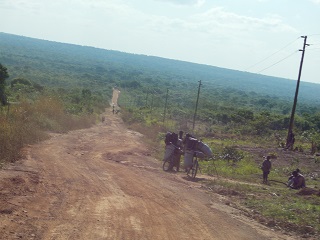 An average Zambian road. But one with electric lines. Somewhat uncommon.
An average Zambian road. But one with electric lines. Somewhat uncommon.
 Standard, Zambian house.
Standard, Zambian house.
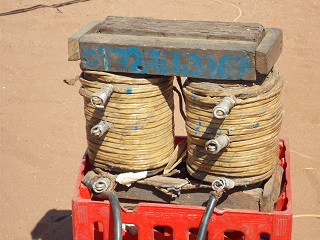 Homemade welder
Homemade welder

 The result of 50 years of bad development work.
The result of 50 years of bad development work.
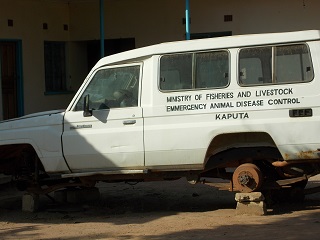 This says it pretty well.
This says it pretty well.
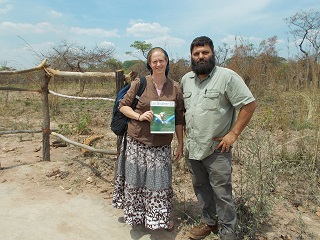 Here we are at the Zambia/Congo border. The magazine is a local one we have here in our county. We can get some free advertisment for taking it far away and sending in the picture.
Here we are at the Zambia/Congo border. The magazine is a local one we have here in our county. We can get some free advertisment for taking it far away and sending in the picture.
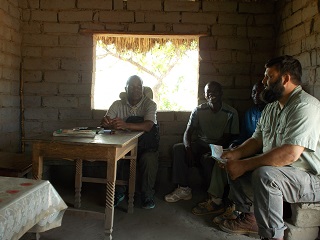 The Congolese immigration office. (Actually built by the organization we are working with as a favor to the man who squeezed us for $40.00) LOL.
The Congolese immigration office. (Actually built by the organization we are working with as a favor to the man who squeezed us for $40.00) LOL.
